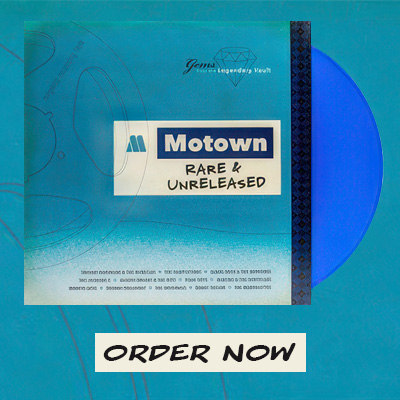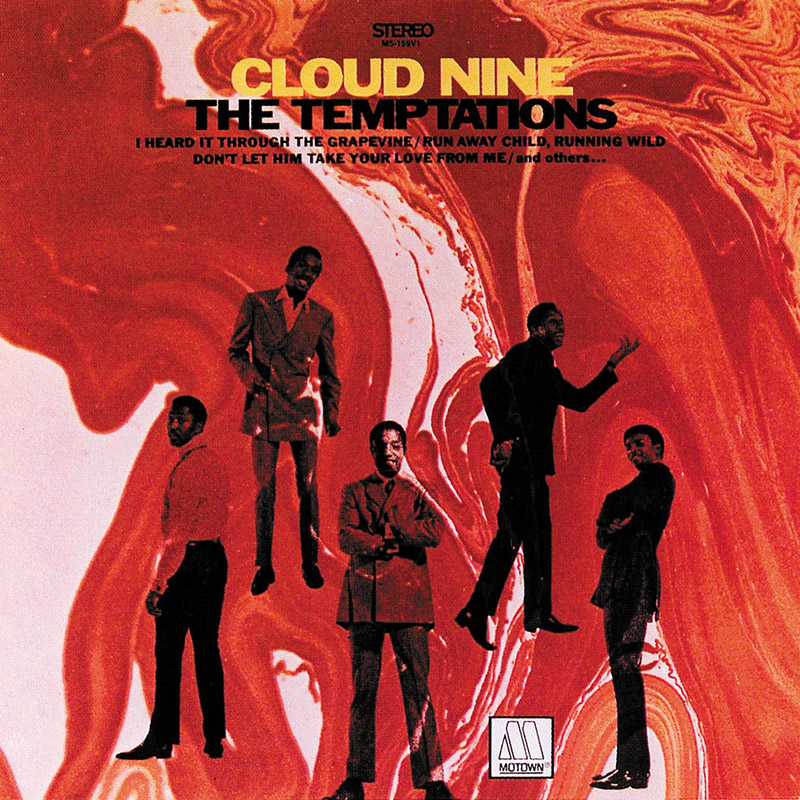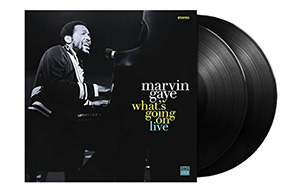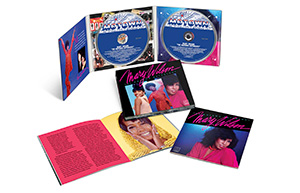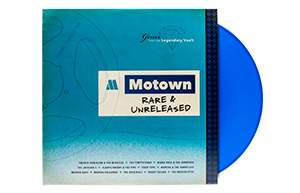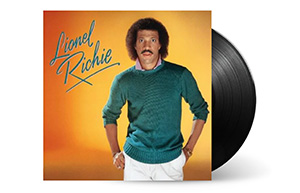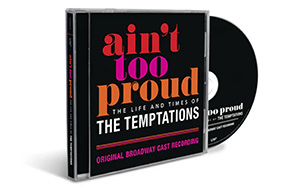The Temptations: Cloud Nine
Five reasons to listen to Cloud Nine:
- Cloud Nine was the first Temptations LP release with Dennis Edwards as lead singer.
- Features Top 10 pop singles “Cloud Nine,” “Runaway Child, Running Wild.”
- Introduces producer Norman Whitfield’s “psychedelic soul,” influenced by Sly & the Family Stone.
- Underrated Paul Williams takes the lead on “Hey Girl,” “Don’t Let Him Take Your Love From Me.”
- Top session guitarist Dennis Coffey joins Motown, debuting on Cloud Nine.
Four fast facts:
- Original release date: 17 February, 1969.
- Top 5 on the Billboard pop charts, and No. 1 R&B for 13 weeks.
- The Temptations’twelfth album in five years.
- Cloud Nine was Motown’s first Grammy® award winner
Full track listing on Cloud Nine:
In detail:
The Cloud Nine album stands as a milestone for one of the most successful and consistently popular acts at Motown Records – or anywhere, for that matter. From early 1964 to mid-1968, the Temptations had delivered a remarkable 13 Top 20 pop hits, including four consecutive Top 10 titles, while eight – count ’em, eight – of their albums reached No. 1 on the R&B charts. Truly, David Ruffin, Eddie Kendricks, Paul Williams, Otis Williams and Melvin Franklin were the emperors of soul. They reigned in concert, too, annually attracting tens of thousands of fans to their shows, whether in top-drawer theaters, funky nightclubs or sophisticated cabaret spots. Their stage choreography was peerless, a standard to which so many others aspired.
So what makes Cloud Nine so significant? Because it was the Temptations’ first LP to follow the shock departure of revered lead singer David Ruffin in the summer of ’68, and it arrived soon after the title track – recorded in October – had redefined their sound and their promise. This is psychedelic soul, influenced by the provocative rock ’n’ R&B fusion of Sly & the Family Stone, and set against America’s social and political turbulence: the April assassination of civil rights leader Rev. Martin Luther King, the ongoing conflict in Vietnam, and a divisive general election. It was time for change.
Ruffin’s successor was Dennis Edwards, a 25-year-old from Birmingham, Alabama, who was living in Detroit and already signed to Motown. He was performing with the Contours at the Howard Theater in Washington, D.C., when he caught the ears of Eddie Kendricks and Otis Williams. “We watched from the wings,” recalled Otis in his autobiography, Temptations, “as he sang lead on Lou Rawls’ hit, ‘Love Is A Hurtin’ Thing.’ Dennis not only had a stirring, soulful voice, but he was a showman with real command of the audience.” The pair made mental notes of this talent, returning to them when the axe fell on Ruffin mid-year.
A new lead singer meant starting from scratch with new music. The Temptations’ schedule during the first half of 1968 was already packed, including sessions with Diana Ross & the Supremes (for their duets album, released in November) and the TCB network television special, showcasing both groups. Many of the latter duties were done in Los Angeles in August. The workload “scared” them, confessed Otis Williams. “We had never taken on such a monumental task.” By the fall, their attention turned to recording with producer Norman Whitfield, to shape the group’s sound and personality with Edwards in the mix.
“You can’t expect to last if you don’t make some changes with the times,” declared Otis. He was a fan of the Beatles and Jimi Hendrix, but “what really grabbed me was Sly & the Family Stone’s first hits,” adding that Sly brought forth something “truly fresh.” Whitfield was not so impressed, according to Williams, but clearly gave it further thought. Session logs show that the producer was halfway through the album when he came up with the title track. “Norman must have read my mind,” wrote Williams, “because he said, ‘So you were right. Let’s go and make the record.’”
Cloud Nine emerged from a workshop jam instituted by Whitfield, and marked on October 1, 1968, the first Motown recording date for highly-regarded Detroit session guitarist Dennis Coffey. “Norman counted off the tempo,” Coffey recalled in his own book, Guitars, Bars and Motown Superstars, “and everybody started playing. I ad-libbed a fast wah-wah effect in the introduction and played the written figure on the guitar through the wah-wah pedal. It immediately became very clear to me that I was playing with the finest rhythm section I’d ever heard.” Helping Coffey was the tone of his Gibson Firebird (“a good, tight, funky sound”) and the application of the wah-wah – a distorted sound which was common in rock, but unusual for R&B at the time.
As for the lyrics of Cloud Nine, Berry Gordy didn’t approve of their implications, but at least one Temptation felt otherwise. “Contrary to popular belief,” Otis Williams emphasized, “the song is not about drugs – Norman didn’t do drugs – but about changing your attitude internally, no matter how impossible that might seem.” Released on the Gordy label in late October, the single swiftly took to the airwaves and the charts, peaking at No. 6 on the Billboard Hot 100 in January. At the close of that month, Motown released “Runaway Child, Running Wild” as the follow-up; Whitfield had finished working on it on New Year’s Eve.
In some ways, “Runaway Child, Running Wild” is even more creatively audacious than “Cloud Nine.” On the album, its running time is 9:21, and even the single edit is 4:30. (By comparison, the Temptations’ first major hit in 1964 was around 2:45.) The propulsive backing track commands as much attention as the vocals, even with Edwards in full-throated roar, while the lyrics add mystery. “You read about [runaways] and you hear these things as a child, as you grow up,” said lyricist Barrett Strong in The Billboard Book of Number One Rhythm & Blues Hits. “You might know some kids in school who had these same problems, so these sort of things pop into your mind, and it just becomes a subject [while songwriting].” Strong praised the Temptations, too. “They would say, ‘Let’s try this, let’s try that.’ They were great to work with.”
The Cloud Nine album is not all psychedelic soul. “Hey Girl” and “Don’t Let Him Take Your Love From Me” serve to strongly showcase the group’s classic virtues: arresting harmonies, aural depth and unvarnished feeling. Moreover, both songs are the province of Paul Williams, the group’s first lead singer, whose compelling baritone seldom received – as some fans of the Temptations have argued – sufficient recognition. “Don’t Let Him Take Your Love From Me” had been previously recorded by Jimmy Ruffin, while “Hey Girl” was originally a Top 10 ballad in 1963 for Freddie Scott.
Another fine Temptations performance is “Love Is A Hurtin’ Thing.” Given what Otis Williams and Eddie Kendricks had heard at the Howard Theater, it would have been logical for Norman Whitfield to assign the lead to Dennis Edwards; instead, he chose Eddie Kendricks. It was completed in November 1968, exactly two years after Rawls’ original topped the Billboard R&B charts. The song was written by Ben Raleigh and Dave Linden, previously known in soul circles for Baby Washington’s “That’s How Heartaches Are Made.”
Kendricks also takes the lead on “I Need Your Lovin’,” while another track, “I Gotta Find A Way (To Get You Back),” gives him a writing credit, together Whitfield, Eddie Holland and the Temptations’ longtime guitarist, Cornelius Grant. There’s one more twist: the group sang the same melody when it was attached to an earlier song, “He Who Picks A Rose.” They first recorded that number in 1963, then again more substantially as part of their Wish It Would Rain album.
When it came to recording lead vocals, Whitfield “had this weird talent,” Dennis Edwards told the late Ben Edmonds in Mojo magazine some years ago. “We’d get a vocal groove going, and then it was like he’d look into our psyches and know exactly the right time to record each of us. We might be doing a background part and he’d hear something in my voice he’d been looking for. He’d stop the take and say, ‘Put the lead back on for Dennis. Right now.’ He’d hear a certain quality and seize on it. He had an uncanny instinct for those things. It’s not something that can be taught.”
While “Whit” was employing the Temptations in December ’68 for his sixth production of “I Heard It Through The Grapevine,” his second – by Marvin Gaye – was on top of the Billboard Hot 100. (For the record, Norman cut the song in this sequence from 1966-68: with the Miracles, Marvin, Gladys Knight & the Pips, Bobby Taylor & the Vancouvers, the Miracles again, then the Temptations.) On the Cloud Nine interpretation, Dennis and Eddie sing solos between five-part harmony workouts by the whole group. The outcome is quite different in mood to Marvin’s – testimony to the strength of the melody and lyrics.
Just a couple of days before Christmas, Whitfield completed “Gonna Keep On Tryin’ Till I Win Your Love.” It closes Cloud Nine as the album begins: with Dennis’ dramatic delivery, and the world put on notice that the group’s sound is, indeed, changing. Two years later, the producer would again select “Gonna Keep On…” for the Temptations, this time making it a showcase for Kendricks. The result opens the group’s 1971 album, Sky’s The Limit.
Finally, it’s worth noting that Cloud Nine was Motown’s first Grammy® win, although the company – and the Temptations – had earned nominations before. Cloud Nine took the prize for 1968’s Best Performance by an R&B Duo or Group, beating out Sam & Dave’s “I Thank You” and Archie Bell & the Drells’ “Tighten Up,” among others. Norman Whitfield and Barrett Strong (with Rodger Penzabene) also earned nominations that year as writers of “I Wish It Would Rain,” but lost to Otis Redding’s “(Sittin’ On) The Dock Of The Bay.” In 1972, Norman, Barrett and the Temptations made their single greatest Grammy® gain, for “Papa Was A Rollin’ Stone,” which netted three statuettes.
Just sayin’ about Cloud Nine:
“I don’t care what other labels put out. I don’t care if it has some commercial shock value. There’s nothing wrong with a shock technique, it works. But to use it where it sounds like you’re talking about using dope is taking artistic freedom a little too far” – Berry Gordy in his autobiography, To Be Loved, recalling his resistance to the lyrics of Cloud Nine when Norman Whitfield brought him the acetate.
Producer: Norman Whitfield.
Songwriters: Gerry Goffin, Cornelius Grant, Edward Holland, Eddie Kendricks, Carole King, Dave Linden, Ben Raleigh, Barrett Strong, Norman Whitfield.
Pre-makes: “Don’t Let Him Take Your Love From Me” (Gladys Knight & the Pips, 1967; Jimmy Ruffin, 1968), “Gonna Keep On Tryin’ Till I Win Your Love” (Edwin Starr, 1967; Jimmy Ruffin, 1968), “I Heard It Through The Grapevine” (Gladys Knight & the Pips, 1967; Smokey Robinson & the Miracles, 1968; Bobby Taylor & the Vancouvers, Marvin Gaye, 1968), “Hey Girl” (Freddie Scott, 1963), “Love Is A Hurtin’ Thing” (Lou Rawls, 1966).
Re-makes: “Cloud Nine” (Mongo Santamaria, 1969; Gladys Knight & the Pips, 1969; Marvin Gaye, 1970; Edwin Starr, 1971; the Persuasions, 1972; Meshell Ndegeocello, 2002), “Runaway Child, Running Wild” (Earl Van Dyke, 1969; the Persuasions, 1972).




